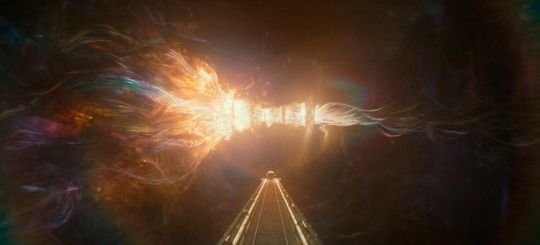#high voltage inverter
Text
high voltage inverter manufacturers, suppliers in Ahmedabad
AES is one of the leading manufacturers and suppliers of high voltage inverter in Gandhinagar, Gujarat, India. Get contact details of high voltage inverter in Ahmedabad, India.
#high voltage inverter#high voltage inverter manufacturer#high voltage inverter supplier#high voltage inverter in india#high voltage inverter in Ahmedabad
0 notes
Text
https://www.futureelectronics.com/p/electromechanical--relays--solid-state-relays/cpc1017ntr-littelfuse-3938842
Power switch, SSR solid state, Quick connect auto, SPST, non latching, DIP,
CPC1017N Series 100 mA 60 V SPST Surface Mount OptoMOS® Relay - SOIC-4
#Relays#Solid State Relays (SSRs)#CPC1017NTR#Littelfuse#Power switch#Quick connect auto#SPST#non latching#DIP#Solar Inverter Relays#High voltage#Reed relay circuit#aromat#Electromechanical relay#Clare#Integrated Circuits Division
5 notes
·
View notes
Text
High Capacity Voltage Regulating Devices Manufacturer in India.
We are manufacturer and supplier of High Capacity Voltage Regulating Devices in Mumbai, India. Call Now.
High Capacity Voltage Regulating Devices. Avc - Automatic Voltage Controllers, Apfc Panel - Automatic Power Factor Control, Step Down Transformers, Isolation Transformers, Ahf - Active Harmonic Filter, Single Phase Stabilizer, Three Phase Stabiliser, Air Cooled Stabiliser, Single Phase Inverter, Three Phase Inverter, Lift Inverter, Power Transformer, Ups, Variacs, Solar Products, Solar Home Lighting Systems, Active Harmonic Filters, Air Cooled Stabilizer, Apfc Panels, Automatic Power Factor Control Panels, Automatic Voltage Controllers, Inverters, Inverters, Isolation Transformers, Power Transformers, Single Phase Stabilizers, Solar Home Lighting Systems, Solar Power Generator, Solar Products, Step Down Transformers, Three Phase Stabilizers, Transformers, Ups, Ups And Inverters, Ups Systems, Variacs, Apfc Panel - Automatic Power Factor Control, Automatic Voltage Stabilizer/Controller , Oil Cooled Automatic Voltage Stabilizer/ Controller, Air Cooled Automatic Voltage Stabilizer/ Controller, Automatic Servo Voltage Stabilizer/ Controller, Industrial Voltage Stabilizer/ Controller, Three Phase Automatic Voltage Stabilizer/ Controller, Single Phase Automatic Voltage Stabilizer/ Controller, Step Up Transformers, Step Down Transformers, Isolation Transformers, Inverters, Ups System, Active Harmonic Filter
#High Capacity Voltage Regulating Devices. Avc - Automatic Voltage Controllers#Apfc Panel - Automatic Power Factor Control#Step Down Transformers#Isolation Transformers#Ahf - Active Harmonic Filter#Single Phase Stabilizer#Three Phase Stabiliser#Air Cooled Stabiliser#Single Phase Inverter#Three Phase Inverter#Lift Inverter#Power Transformer#Ups#Variacs#Solar Products#Solar Home Lighting Systems#Active Harmonic Filters#Air Cooled Stabilizer#Apfc Panels#Automatic Power Factor Control Panels#Automatic Voltage Controllers#Inverters#Power Transformers#Single Phase Stabilizers#Solar Power Generator#Three Phase Stabilizers#Transformers#Ups And Inverters#Ups Systems#Automatic Voltage Stabilizer/Controller
0 notes
Text
https://www.futureelectronics.com/p/semiconductors--analog--regulators-reference--linear-regulators/lp2950cdt-5-0rkg-onsemi-1118329
Inverter voltage regulator, regulator circuit, Types of linear voltage regulator
LP2950 Series 100 mA 5 V Fixed Output SMT LDO Voltage Regulator -TO-252
#Regulators & References#Linear Regulators#LP2950CDT-5.0RKG#onsemi#Inverter voltage regulator#regulator circuit#Types of linear voltage regulator#High voltage#Integrated-circuit#Low dropout linear regulator#Voltage Regulator#regulator 12v
1 note
·
View note
Text
https://www.futureelectronics.com/p/semiconductors--discretes--transistors--mosfets/irlr2908trpbf-infineon-9173916
Mosfet amplifier, power mosfet, mosfet applications, mosfet transistor
Single N-Channel 80 V 30 mOhm 33 nC HEXFET® Power Mosfet - TO-252AA
#Infineon#IRLR2908TRPBF#Transistors#Mosfets#amplifier#power mosfet#mosfet applications#IGPT transistor#mosfet function#igbt inverter#High voltage mosfet#Mosfet switch circuit#mosfet gate
1 note
·
View note
Text


FD5000 series 3kV Medium Voltage Drive / FD5000 series 3.3kV Medium Voltage Drive - FGI
The FD5000 series medium voltage drive is high-high voltage device, which is controlled by DSP, with the SVPWM and cell in series multi-level technology to guarantee the inverter suits different industrial fields. The FD5000 series includes the phase shifting transformer, power cell and controller.
The product was awarded as national key new products in 2003.
● Voltage: 3kV 3.3kV
● Power: 200~5000kW
● Control Mode: V/f, Vector control
● OEM/ODM: Yes
● Supply Ability: 3000 Sets per Year
1 note
·
View note
Text
https://www.futureelectronics.com/p/semiconductors--discretes--diodes--ultrafast-rectifiers/murs160-e3-5bt-vishay-8143063
Ultrafast rectifiers minimize power, high frequency switched mode power supplies
1 A 600 V 75 ns Surface Mount Plastic Ultrafast Rectifier - DO-214AA
#Diodes#Ultrafast Rectifiers#MURS160-E3/5BT#Vishay#power efficiency#product#reverse recovery time#minimize power#high frequency switched mode power supplies#Secondary output rectifications#inverters#High reverse voltage
1 note
·
View note
Text




Just a bunch of sketches. Mostly me filching a bunch of stuff from that LoZ fan project into my own thing. I've been thinking about the semi-common myth of storm celestial deities versus depths dragons and mapping it onto two competing groups terraforming a planet.
By the way, I AM working on Aphelion, I just feel like posting the final pages of this comic will spoil stuff so I'm keeping them private until done.
Top image: So the people of this small fishing town and a horror monster might have accidentally adopted each other. He is actually like a kitty in that he will invert his face into a mess of needles and then look at you with big wet eyes.
Middle Left: Sharky's mother. She is shockingly manipulative and cunning for an 300 meter long nuclear sea monster. Both of his parents kind of suck! His father was a sort of Zeus/Thor/Susanoo figure and somehow Sharky happened (his mom planned it). Anyways he's not supposed to exist! That's a dragon with blood keys to the celestial weapons network! Whoopsie!
Middle Right: A bunch of concepts for Sharky. He can't really speak now because his mouth is like that, and since he used to be basically human, he's a little blitzed out on all the new senses he has and the fact that satellites are talking to him in a language he doesn't understand. Also, I know there's a trope of where ascended people leave humanity behind and stuff, but like, if I didn't need sleep and couldn't be harmed by anything conventional, I think I'd hold peanuts in my hands and have birds eat out of them for eight hours straight. And that's kind of what he does. People leave their kids with him when out fishing because he likes the cool rocks they give him and no other monster will appear with him around. Also he has his father's sword which is a flaw in reality that always has to be at an absurdly high voltage. It's effectively a lightning bolt that never stops. He effectively acts as its sheathe because his armored skin is a strong enough shield.
Bottom: More Sharky and a character from TankEater. Potentially Dex's most dangerous foe in the first comic and thematically their opposite, a short king with weaponized disassociation that builds up a mental version of you that they use to predict your actions (remember, Dex isn't exactly a good guy at the beginning).
55 notes
·
View notes
Text
Well, Victor Timely sure knows how to draw attention and eventually make some money. And make me write another post on a partially scientific topic. I’m not an expert tho!


On the right side of the stage there's a sign, 'Electrifying achievement to harness the power of time'
And then he explains what the Loom does. 'My temporal loom inverts the temporal decay of the electricity flowing through it, lowering its entropy and gathering it into fine threads of power. Which it then weaves into elegant ropes of voltage. A chaos of particles is transformed into order.'
(I'm gonna assume he quotes OB's guidebook and not just wings it all randomly, because at least a part of what he says made sense to me)
In short, he says that the Loom can arrange matter into an ordered state. And that it not only uses electricity but also reproduces it in a form of threads and ropes. That would explain how the TVA operates outside of uh time and why it has power surges in s2e1. But it still leaves the question from where comes the initial energy to kick start the loom.
I believe that the temporal decay is synonimous to the increasing entropy. Entropy is a measure of how many ways there are possible to rearrange the same amount of matter without changing its 'shape'. Simply put, objects with low entropy can't be rearranged without being broken/reassembled. And those with high entropy can be rearranged without changing its form or shape, so to speak. Prof. Brian Cox compares the former with a sand castle and the latter with a pile of sand 👌 Another important point is that entropy inevitably increases over time: order becomes disorder. BUT. If we go back in time — and not like in Doctor who but like in Tenet — then we would observe entropy again, increasing relative to us (and not decreasing if we observe it from the present into the past).
Now, I think that raw time, as OB named it, is energy with high entropy and a physical timeline is rearranged energy with low entropy. When a timeline branches, entropy increases again. Also, temporal radiation means a form of energy that travels from a source through space.
(Side note. My initial guess was: to isolate a timeline HWR would need to have something threaded. Which would mean that the Loom came first. But when the timeline branches it creates more input INTO the Loom. And what’s more, in the end of s1 the Sacred timeline branches into a web which resembles the raw time. Just like Timely said, ‘the energy of the past, present and future flows all around us.’ And HWR managed to harness it to sustain his big project. So, raw time/sacred/other timelines exist as they are, and the Loom is just a tool to operate the former)
(Side note 2. The Sacred timeline doesn’t consist of just one universe. It’s weaved from multiple but strictly selected multiversal timelines. Otherwise we’d see minutemen in previous movies)
I can accept temporal auras which can help track and pull someone across space-time. Or temporal radiation, which is itself a fun concept. But what puzzles me the most is time being a form of matter. In our reality, at least according to the current physics, it’s a dimension. I can’t wrap my head around it. Even in a fictional way, i can’t explain it to myself. Because I experience time the same way people do in the show. I think here Timely either simplifies so to make people understand and buy his Loom or he doesn’t know what he’s talking about.
And that’s why, until proven otherwise or explained by OB, I think that the Loom is first of all just a big power generator. The timelines are being pruned manually by time cops setting time bombs and arresting variants. Resetting a timeline means removing entropy that was created by a variant’s actions. The Loom generates energy for the TVA, people working there and their equipment. And maybe it charges Kang’s time chair.
The multiverse doesn’t need the Loom to function. Time flows on its own, entropy increases all the time, it’s far more inevitable than Thanos. Loom is a tool, it can be removed, repaired or upscaled. The TVA as organisation and people and city (?) all need it but, most of all, the person behind it.

#loki series#loki season 2#loki spoilers#kang the conqueror#victor timely#he who remains#loki meta#LWR's theories
15 notes
·
View notes
Text

Three-phase Independent Adjustable RCD Nonlinear Load Bank
The three-phase independent adjustable RCD nonlinear load bank is designed to accurately test and evaluate power systems under diverse load conditions. Its ability to independently adjust each phase ensures precise simulation of real-world scenarios, enhancing the reliability and performance of generators and UPS systems. This advanced load bank accommodates nonlinear loads, making it ideal for testing modern power equipment and ensuring compliance with industry standards.

Product Description:
Ensure your power systems meet peak performance with the three-phase independent adjustable RCD nonlinear load bank. Whether testing inverters or conducting UPS load tests, its comprehensive capabilities provide unparalleled reliability and data accuracy. Ideal for both lab and field applications, this load bank is your trusted partner in safeguarding critical power infrastructure, offering precise control and robust performance for demanding testing requirements.
Product Features&Advantage:
1.Suitable for testing inverters and UPS loads.
2.Includes upper computer operating software, compatible with ATE special envoy.
3.Equipped with RS485, Ethernet, CAN, and other communication ports.
4.Features programmable test steps, ideal for automatic testing of photovoltaic and energy storage inverters.
5.Capable of loading any power within the full power range.
6.Power adjustment precision: as low as 10W.
7.Power factor adjustment: as low as 0.45.
8.Peak factor CF: up to 3.
9.Customizable for a wide voltage range.
10.Utilizes PC data management software to control load operations and save test data.
EMAX load bank stands at the forefront of the power testing industry, providing high-quality load banks designed to meet various industrial needs. Delivered worldwide to ensure that global customers can use our advanced solutions
2 notes
·
View notes
Text
high voltage inverter manufacturers in india
Automation & Engineering Services is provide ac drive services of repairing in India. We are also manufacturer of high voltage inverter in ahmedabad,India.
#high voltage inverter#high voltage inverter manufacturer#high voltage inverter supplier#high voltage inverter in india#high voltage inverter in ahmedabad
0 notes
Text
How does an engine contribute to a car's powertrain?
The powertrain in a vehicle is the system responsible for generating power and delivering it to the wheels to propel the vehicle forward. The operation of a powertrain can vary depending on whether the vehicle is powered by an internal combustion engine (ICE) or an electric motor (in the case of electric vehicles). Here's a general overview of how a powertrain works in both types of vehicles:
Internal Combustion Engine (ICE) Vehicle - Combustion Process: In an ICE vehicle, the powertrain starts with the combustion process in the engine. Fuel (gasoline or diesel) mixes with air in the combustion chamber and is ignited by spark plugs (in gasoline engines) or compression (in diesel engines).
Power Generation: The combustion process generates energy in the form of mechanical power, causing pistons to move up and down within the cylinders of the engine. This motion drives the crankshaft, converting linear motion into rotational motion.
Transmission: The rotational motion from the crankshaft is transmitted to the transmission, which consists of gears that allow the driver to select different ratios (speeds). This enables the engine to operate efficiently across a range of vehicle speeds.
Drivetrain: The transmission sends power to the drivetrain components, including the driveshaft, differential, and axles, which transfer power to the wheels. The differential allows the wheels to rotate at different speeds, enabling smooth turns.
Wheel Movement: The power transmitted through the drivetrain causes the wheels to rotate, propelling the vehicle forward or backward depending on the gear selection and throttle input from the driver.
Electric Vehicle (EV) -
Battery Pack: The primary source of power for the EV, storing electricity in chemical form.Powers the electric motor and provides electricity for all electronic devices within the EV.
Battery Management System (BMS): Monitors battery cell conditions, including voltage, current, temperature, and state of charge (SoC).It protects the battery against overcharging, deep discharging, and overheating and helps balance the charge across cells. Ensures optimal performance and longevity of the battery by regulating its environment.
Inverter: Converts DC from the battery pack into AC to drive the electric motor.Adjusts the frequency and amplitude of the AC output to control the motor’s speed and torque. Critical for translating electrical energy into mechanical energy efficiently.
Onboard Charger: Facilitates the conversion of external AC (from the grid) to DC to charge the battery pack. Integrated within the vehicle, allowing for charging from standard electrical outlets or specialized EV charging stations. Manages charging rate based on battery status to ensure safe and efficient charging.
DC-DC Converter: Steps down the high-voltage DC from the battery pack to the lower-voltage DC needed for the vehicle's auxiliary systems, such as lighting, infotainment, and climate control. Ensures compatibility between the high-voltage battery system and low-voltage electronic components.
Electric Motor: Converts electrical energy into mechanical energy to propel the vehicle. It can be of various types, such as induction motors or permanent magnet synchronous motors, each offering different efficiencies and characteristics. Typically provides instant torque, resulting in rapid acceleration.
Vehicle Control Unit (VCU): The central computer or electronic control unit (ECU) that governs the EV's systems. Processes inputs from the vehicle’s sensors and driver inputs to manage power delivery, regenerative braking, and vehicle dynamics. Ensures optimal performance, energy efficiency, and safety.
Power Distribution Unit (PDU): Manages electrical power distribution from the battery to the EV’s various systems. Ensures that components such as the electric motor, onboard charger, and DC-DC converter receive the power they need to operate efficiently. Protects the vehicle's electrical systems by regulating current flow and preventing electrical faults.
In both ICE vehicles and EVs, the powertrain's components work together to convert energy into motion, enabling the vehicle to move efficiently and effectively. However, the specific technologies and processes involved differ significantly between the two propulsion systems.
#electric powertrain technology#conventional powertrain#Electric vehicle components#revolo hybrid car kit#ev powertrain development services#software (SW) platforms for all Electric vehicles components#Battery Management Systems#Inverter#Smart Charger#VCU solutions
3 notes
·
View notes
Text
High Capacity Voltage Regulating Devices Manufacturer in India.
We are manufacturer and supplier of High Capacity Voltage Regulating Devices in Mumbai, India. Call Now
#High Capacity Voltage Regulating Devices. Avc - Automatic Voltage Controllers#Apfc Panel - Automatic Power Factor Control#Step Down Transformers#Isolation Transformers#Ahf - Active Harmonic Filter#Single Phase Stabilizer#Three Phase Stabiliser#Air Cooled Stabiliser#Single Phase Inverter#Three Phase Inverter#Lift Inverter#Power Transformer#Ups#Variacs#Solar Products#Solar Home Lighting Systems#Active Harmonic Filters#Air Cooled Stabilizer#Apfc Panels#Automatic Power Factor Control Panels#Automatic Voltage Controllers#Inverters#Power Transformers#Single Phase Stabilizers#Solar Power Generator#Three Phase Stabilizers#Transformers#Ups And Inverters#Ups Systems#Automatic Voltage Stabilizer/Controller
0 notes
Text
So one of my most-used Eurorack modules is a device I designed myself and fit into a 2HP panel: my attenuverting mixer. It's the little guy depicted below in both its current state and a (poor) mockup of an enhancement I'm considering making.


An attenuverter, for anyone wondering, is an attenuator that also inverts. Like a volume control, if you put a signal through while the knob is fully clockwise, all of it gets through. As you turn counterclockwise, less and less gets through until the midpoint, where nothing gets through. Then, as you keep going counterclockwise, it starts to increase again, but now it's inverted — if you displayed the signal on an oscilloscope, the highs would now be low and vice versa — with the full counterclockwise position yielding full again, but upside down, scopewise.
When nothing is plugged into the input jack, it's normalled to +5V, which means that the knob can select any voltage between -5V and +5V. This is useful directly as the control for any other CV input, but it's more broadly useful in a mixing context: the outputs of the two attenuverters and the signal at the unity input are added together and output at the Mix Output. In addition to audio mixing, control voltages sum this way. For example, the MIDI to CV adapter I have outputs the signal from the connected keyboard's pitch bend as a voltage between 0V and 10V. When connected to an oscillator, that's always increasing the frequency no matter where the rocker is, and by up to 10 octaves, which is way too much. But by patching it into one attenuverter and setting it to a swing of 0V to 2V, and setting the other to -1V, you can calibrate it to a nice, constrained octave up and down.
But the point I was making here is that because it's a skinny little module with flattened knobs (really just the pot shafts), it's difficult to tell at a glance where they're set. So I'm considering modding those by marking them as seen in the second image — painting red the flat side (the one that's upward when the pot is in its center position and the attenuation is all the way down), and etching and painting a red line across the face. (I should probably also clean up the panel area around the Unity Input jack.)
7 notes
·
View notes
Text
The Truth the Whole Truth
But nothing is the truth.
I have been meditating on the eternal dichotomy of tubes versus transistors. In my opinion the big difference is in power amplifiers.
Small signal devices as in preamplifiers in class A operation are not so different in either glass or solid state. But in power amplifiers the difference is significant and is the cause behind the wars between the tribes.
First up is for high quality devices the differences are small. And neither is best. Though I do lean towards solid state for being more accurate.
So I meditate on nanoseconds and feedback. No device is free from distortion. That is just another way of saying they are not perfect. An excellent method to reduce distortion is feedback, or if you like to stand on your head feed forward.
The idea is simple. Compare what you get at the output to the input. If there is a difference other than magnitude subtract it (negative feedback) or add the inverse by way of a perfect small signal amplifier. (feed forward see that THX patent or the old QUAD amp) Either way is a correction signal. Fix the error.
Some people fret over the idea that if you correct an input that passes through the same imperfect device it is never right. Some people will claim that making a device with no correction signal is an obvious choice. It only has to be perfect.
All of my power amps have negative feedback. All told I have 4 of those. 3 are solid state and 1 is tube. Just in terms of wire and the speed of light it takes about a bit over a nanosecond for the correction signal to get from the output to the input. A nanosecond is a billionth of a second. That inverts to a frequency of gigahertz. None of my amps go to gigahertz so that gap would get lost no? It is effectively no delay at all.
A tube amp is special though. All production tube amps have output transformers. Small signal class A devices do not need output transformers so they are not that different. Power Tubes are high voltage and speakers are low voltage (except for electrostatics) so you need an impedance matching device, a transformer. And 99 times out of 100 the correction signal is pulled off the secondary winding which is many feet of wire and loops of magnetic flux away from the power tube. As magnetic flux is involved and all sorts of black magic and differential equations you also get phase issues as well as other things which makes the feedback a bit weird and always off a bit. Oh the test instruments show things as better, but not quite right to human ears.
I can hear the effect. My high end tube amp masks tiny little details my brute of a transistor amp is quite happy to reveal. BUT the tube amp paints lovely colors over the signal. I do mean lovely, rich, and very attractive textures. It is a shame they are not real, but I like them. That in the end is the difference. I know they are not real. I know those tiny sounds are there under the nice colors.
That is why the transistor amp is more accurate. The tube amp is prettier sounding. If both were perfect they would sound exactly the same.
I have the advantage of not adhering to either side of the hostile argument. I have both. Also when I put the black Franken-Amp back in service as the weather warms up it saves the tubes in the glass beast. Rather than one or two years service I should get double whatever is due.
2 notes
·
View notes
Text
What is UPS?
What is UPS?
In this block we see following points
What is UPS?
UPS block diagram
How UPS works?
UPS power range and backup time
Now we will discuss
What is UPS and its functionality?
UPS stands for Uninterruptable Power Supply. It is an electronic power supply which leads for enable some load for short period of time when electricity goes off.
There are Two Types of UPS system
Offline UPS
Online UPS
How UPS Works?

Simply UPS means provides uninterrupted power to the AC load. This AC load converts into DC power. It is also known as standby or emergency power supply and standby generator. After light shut down it switch into the battery bank power and provides 10-15 minutes standard backup time at full load.
In operating conditions, the current is drawn from the main AC power supply or power grid, while Online UPS provides load current in case of a power failure. Here the battery is used as the backup source to transfer power to the load in case of power break.
UPS power range and backup time
Each UPS have different output power, which is designed and calculated according to the connected load. Usually, the output power is shown in the volt-ampere (VA) unit. The common online or offline UPS output power in the market are 600VA, 1kVA, 1.5kVA, 2kVA, 6kVA, 10kVA, 15kVA, and 20kVA and also available in higher kva e.g30Ka, 100Kva etc. Backup time is the time that UPS can provide the connected load/loads and depends on how many batteries UPS has.
Advantages of UPS
Here are some advantages of Uninterruptable Power Supply
Highly reliable
Better protection
Noise free
Offers continuous power
In case of main power failure, no need to change the operation mode.
Negligible transfer time.
Wide Input voltage range
Disadvantages of UPS
Every machine has own drawbacks.
It generates more heat because of continuous power on
Complex design
High Power Loss
We Sycom Power Protection Pvt. Ltd provides all range of online and line interactive UPS. We provide Pan India service of batteries, UPS, Inverters and stabilizer. For more details please contact us www.sycompower.com
#online ups#UPS#Uninterruptable Power Supply#sales#Sycom Power Protection#line interactive UPS#batteries#battery#voltage stabilizer#offline UPS
2 notes
·
View notes